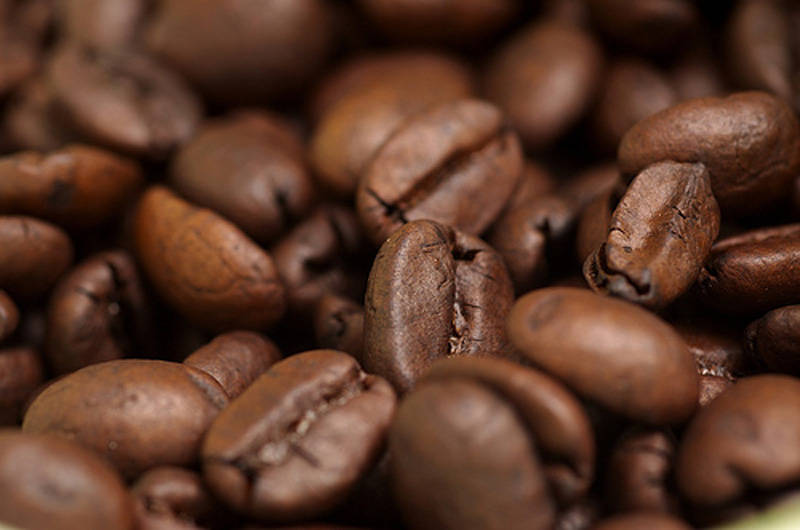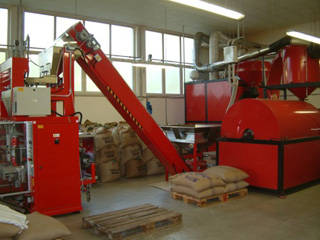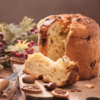Torrefazione, an Italian Art
“Making coffee in Italy is like making coffee in the 1600s,” JWOWW of Jersey Shore said during the second episode of Season 4, set in Florence, on having to use a coffee grinder. The quote is so popular that there are talks of having printed on shirts and whatnot. Synonymous with Italian culture, coffee is an important part of daily life in the country that invented the espresso machine, although it is not actually grown in Italy but...
If you do research on Italian coffee basically every single site or source of information that mentions it says something like this: “Italy has a particularly rich and vibrant coffee culture, and is the destination of choice for coffee lovers from all over the world. Italian coffee is some of the best in the world, with hundreds of large and small producers importing beans and producing coffee blends within Italy. Coffee bars and houses can be found all throughout Italy, where espresso coffee drinking is as much a ritual and a way of life as it is a simple drink ” .
In the same sentence we see that Italian coffee is the best in the world and that beans are imported. Exactly! Italy does not grow any coffee, it is actually bought from other countries, then processed in Italy and that makes it “Italian coffee.” Italy has become a master in the art of torrefazione, it being the Italian name given to the toasting process, and blending. Torrefazione applies high temperatures in order to dehydrate, oxidize and, in some cases, partly char (depending on the toasting degree) coffee.
The degrees go from unroasted, light, cinnamon, medium, high, city, full city, French and Italian. During the process the coffee bean undergoes a few transformations such as sugar caramelization, and cellulose charring, and the high temperatures cause a partial loss of caffeine. A roasted bean increases its size by 30% while its weight decreases because part of its water content evaporates. The most used qualities are Arabica whose caffeine content goes from 1,1% to 1,7%, while Robusta goes from 2% to 4,5%.
The balance of a perfect toasting is the result of two variables: time and temperature. In Italy toasting is crucial in making a very aromatic coffee that is relatively poor in caffeine if compared to coffees of other countries. The most common base for espresso blend is Brazilian coffee. Brazil is the world's biggest producer of Arabica, totaling more then a third of the world's total production with 5 billion plants and 300,000 producers. Right behind Brazil, with 10% of the world's production, we find Colombia and its sweet coffee.
Guatemala has a more limited production but the quality is absolutely excellent – coffee is very sweet, with a balanced acidity and an intense aroma that goes from chocolaty to flowery. It is an ideal ingredient for coffee blends. African countries have also have a rather limited production but the quality is definitely superior. Kenya, thanks to its temperate climate, produces an acid and aromatic coffee and Ethiopia offers a really flowery coffee with caramel notes. India produces a full bodied coffee characterized by a touch of bitterness and a spiced aroma.
Coffees from El Salvador, Costa Rica, Mexico, Panama and Honduras are sweet with some acidic notes and feature a light sweetness that is typical of Central America. All blends we drink are made of coffees of different origins. Each origin brings its own aromatic notes, its doses of bitter and sweet and its unique body. Blending is a real art because it needs to bring together all different ingredients with harmony. Each blend can be prepared using a system with “set elements” meaning with a recipe that has been established over time (always same ingredients and same amounts) or it can be changed following new recipes and modulating quantities.
When buying coffee from another country preserving the quality of green coffee is essential. Transport is done via sea with the greatest care and extreme attention to detail. In order to get excellent coffee bags are carefully placed in containers where there is no mold, condensation or bad smells. Bags are placed in a way to allow air circulation between them.
Then bags arrive at the toasting factory where the first selection is performed: “vibrovaglio” is a big sieve that gets rid of rocks leaves or pieces of wood. An aspirator eliminates small and light one while a magnetic separator eliminates metallic ones. Now the green beans are stored in silos. The final stage is assigned to bi-chromatic machines that “photograph” each bean and eliminate the unripe and fermented ones. Indeed just one imperfect bean among the 50 that make up a cup of espresso can totally ruin it.
During the production process beans are exposed to high temperatures (200-220 °C) while the are stirred. There are two main roasting methods: “A letto fluido” (fluid-bed system) where beans are subject to air jets of temperatures between 300-400 °C for a few minutes as they suspended in the toasting chamber, or “A tamburo rotante” (rotating drum) where the coffee is placed inside a metallic drum with “wings” used to continuously toss the beans in order to make the toasting uniform.
The process, lasts about 15-20 minutes depending on the coffee type, the power of the machine and the desired flavor of the end product. The first system produces a coffee that is more toasted on the outside than on the inside while the latter results in more even product. Each company has its tricks and secrets and produces unique coffee that makes Italy proud. Italian coffee culture finds its top expression in blending. By mixing together coffees from different origins, qualities and characteristics integrate and amalgamate resulting in final products that are more balanced and harmonious.








































i-Italy
Facebook
Google+
This work may not be reproduced, in whole or in part, without prior written permission.
Questo lavoro non può essere riprodotto, in tutto o in parte, senza permesso scritto.